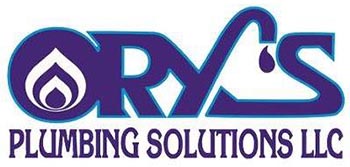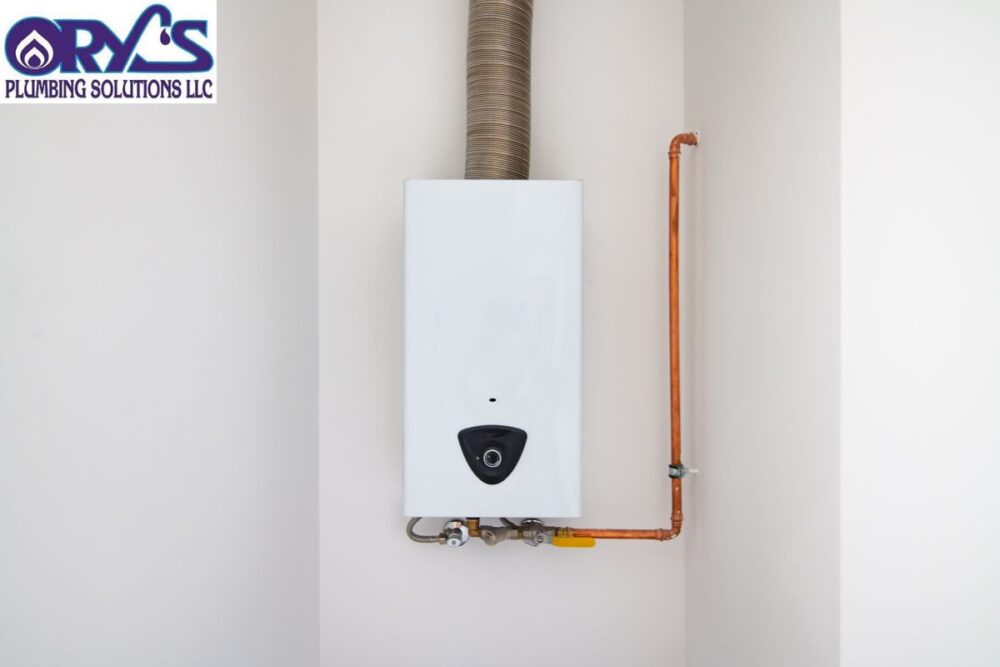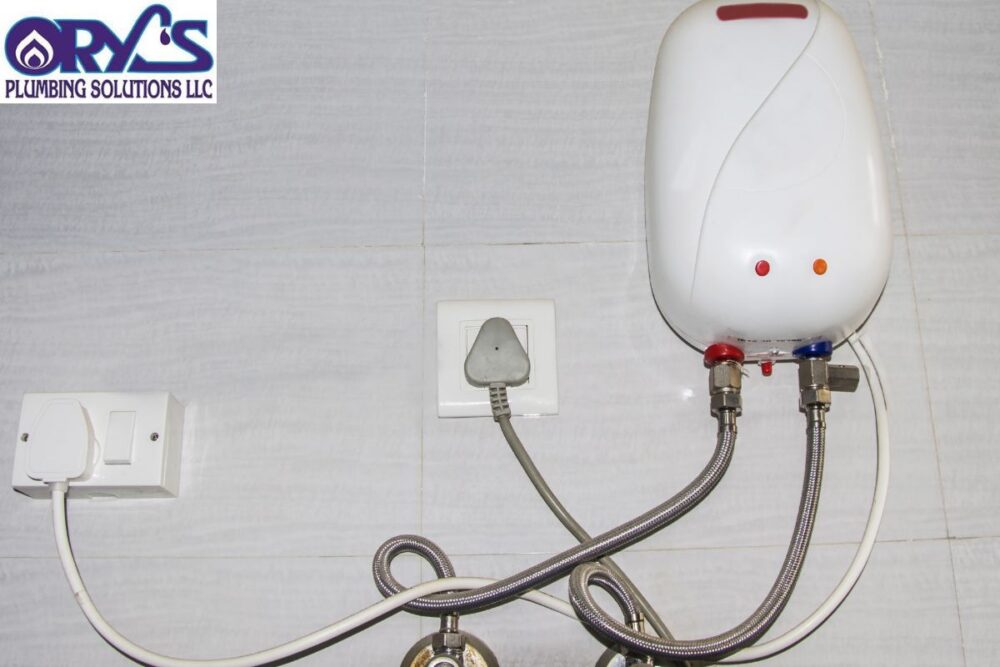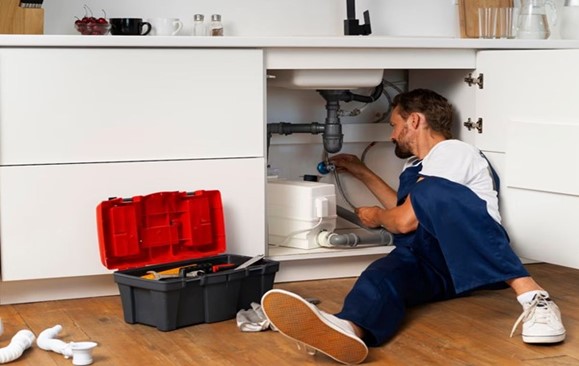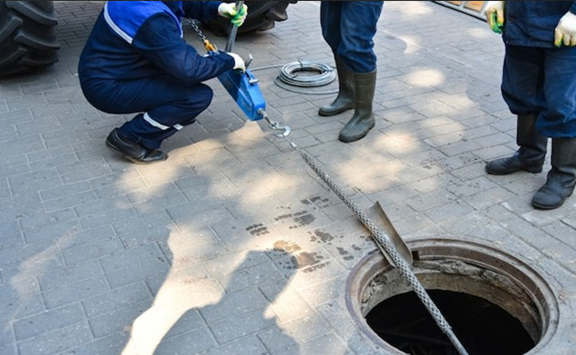What Causes a Tankless Water Heater to Stop Working
Key Takeaways:
- Mineral buildup, ignition failure, or power issues are common reasons why a tankless water heater stops working.
- System overload and water pressure problems can cause inconsistent hot water or sudden shutdowns.
- Error codes and temperature fluctuations are key warning signs that your unit needs attention.
- Regular maintenance like flushing and filter cleaning helps prevent problems and extend the heater’s lifespan.
Tankless water heaters provide hot water only when needed, which can save energy and space in your home. Unlike traditional water heaters that store hot water, tankless models heat water on demand as it flows through the unit. However, like any home appliance, they can sometimes have problems and stop working. Understanding the common reasons why your tankless water heater might not work is important for keeping it running smoothly. This guide will explain why your tankless water heater might stop providing hot water, what signs to look for, and what steps you can take to fix or prevent these issues.
Common Causes of Tankless Water Heater Failure
Mineral Buildup
One of the most frequent problems is the buildup of minerals, especially in areas with hard water. Hard water contains minerals like calcium and magnesium that can create a chalky substance called limescale. Over time, these mineral deposits can build up inside the heat exchanger, which is the part that heats the water, making it work less well. This buildup can reduce how much hot water you get, cause the temperature to change unexpectedly, or even make the unit stop working completely. A tankless water heater with mineral buildup has to work harder to heat water, which increases energy consumption and raises utility bills. If ignored, these deposits can lead to inconsistent water temperatures, reduced hot water flow, increased energy consumption, and even complete system failure.
System Overload
Tankless water heaters have limits on how much hot water they can provide at one time, measured in gallons per minute (GPM). If too many hot water devices are used at the same time, such as multiple showers or washing machines, the system can get overloaded. When the demand for hot water is too high, the unit may struggle to heat enough water or even shut down as a safety measure, leaving you with cold water. For example, if you want to shower while running your dishwasher and washing machine, you’d add up the flow rates of those three things, and your tankless heater must be capable of that total flow rate to use all three simultaneously. If a tankless unit frequently becomes overloaded, it might be necessary to upgrade to a higher capacity unit or add a second unit.
Cold Water Sandwich Effect
This common issue happens when you get a brief burst of cold water in between hot water use, especially after someone else has just used hot water. When the hot water is turned off, some warm water stays in the pipes between the water heater and the faucet. When hot water is turned on again, this leftover warm water comes out first, followed by a short flow of cold water before the heater can produce new hot water. This occurs because the tankless heater takes a short time to heat up the exchanger, and during that time, some cold water can get through. While this is a normal part of how tankless systems work, longer cold spells could mean a bigger problem, potentially indicating other underlying issues with the water heater. Electric tankless water heaters are more prone to the “cold water sandwich” because their coils take time to heat up, similar to how an electric stove heats up slower than a gas stove.
Ignition and Burner Issues
For gas-powered tankless water heaters, problems with the ignition system can prevent the unit from heating water. This can happen if there’s not enough gas, if the igniter (the part that creates the spark) is faulty, or if the flame sensor (which checks if the flame is on) is dirty or broken. A blocked exhaust vent can also prevent ignition by affecting the air supply needed for the flame. Common causes include a low propane tank, an unpaid gas bill, gas line issues, or problems with the igniter or flame sensor. Error codes on the display, such as Rheem fault code 11 or Rinnai fault code 11, often indicate an ignition problem.
Electrical and Power Supply Issues
If an electric tankless water heater is not getting power, it won’t work. Common electrical problems include a tripped circuit breaker or a blown fuse. An overloaded electrical circuit can cause the breaker to trip, cutting off power to the unit. It is important to ensure the unit has a continuous power supply and that electrical connections are secure. A malfunctioning control board can also lead to electrical issues, indicated by the LED display not working even if power is present at the wires. Sometimes, a power surge can cause the tankless water heater to lose power, though unplugging and replugging the unit might reset it.
Water Flow and Pressure Problems
Tankless water heaters need a specific amount of water flow and pressure to work correctly. If the water pressure is too low or changes often, the heater might not turn on or could shut off. Low water pressure can be caused by a dirty water filter, mineral buildup, or an improperly sized gas line. If the water filter becomes clogged, it can lead to a drop in water pressure and cause the unit to cycle on and off more frequently, resulting in inconsistent hot water. A plumbing system crossover, where cold and hot water lines are connected, can also cause low water pressure by allowing cold water to flow into the hot water line. Furthermore, if multiple water outlets are used simultaneously, it may lower the flow of water to the heater.
Faulty Components and Error Codes
A tankless water heater has various parts, and if any of them fail, the unit may stop working. Components like the heat exchanger, burner or heating element, gas valve or electric element, flow sensor, temperature sensors, control board, and venting system can all experience issues. For example, a damaged flow sensor can lead to sudden temperature fluctuations or cause the unit to not activate properly. Many modern tankless water heaters show error codes on a display panel, which can help you figure out what’s wrong. These codes point to specific problems like ignition failure (e.g., Rheem error code 11), overheating (e.g., Rheem error code 16), or issues with gas supply (e.g., Rheem error code 13).
Signs Your Tankless Water Heater Has a Problem
No Hot Water
The most obvious sign that your tankless water heater has a problem is when no hot water comes out of the faucet. This can happen even if the unit seems to have power and no error codes are showing. It might be due to a lack of gas supply, a closed water valve, or a faulty heating element. For gas units, ensuring the gas supply valve is open and the pilot light is lit is crucial.
Inconsistent or Fluctuating Water Temperature
If your water temperature keeps changing between hot and cold, it means your tankless water heater is having trouble keeping a steady temperature. This can be caused by mineral buildup, issues with gas pressure or water flow, a dirty water filter, or a faulty temperature sensor. The “cold water sandwich” effect is also a type of temperature fluctuation, where a brief cold burst occurs between hot water deliveries. If the water temperature is too high or too low, checking and adjusting the thermostat setting is recommended.
Error Codes or Warning Lights
Modern tankless water heaters often display error codes on their control panel when there’s an issue. These codes are like messages that tell you what might be wrong with the unit. Each manufacturer has a list of error codes in their user manual, which can help you understand the problem, such as ignition failure (e.g., Rheem fault code 11), overheating (e.g., Rheem fault code 16), or gas supply issues (e.g., Navien error code E003). For example, a Rheem Error Code 00 means a power interruption, and Error Code 24 indicates a problem with the flow sensor.
Basic Troubleshooting Steps
Checking Power and Gas Supply
If your unit is not working, first check if it’s getting power. For electric units, check if the circuit breaker is tripped and reset it if needed by turning it off and then back on. For gas units, make sure the gas supply valve is fully open and there are no gas leaks. Also, check if your propane tank is full or if there’s air trapped in the gas line. If you suspect a gas supply problem, contact your gas provider.
Inspecting and Cleaning Filters
The water filter is responsible for keeping sediments and dirt out of the unit, and a clogged filter can cause a drop in water pressure and overheating. To prevent this, check the water filter regularly and clean or replace it if it needs to be. The air intake filter for gas models also needs to be kept free of dust or lint, and should be cleaned with a toothbrush and cold running water. All Navien tankless water heaters have inlet air screens inside the cabinet to prevent debris from being pulled into the blower, burner, and heat exchanger assembly.
Flushing the System to Remove Mineral Buildup
To prevent and fix mineral buildup, you should regularly flush your tankless water heater, ideally annually. This process, called descaling, involves circulating a special solution, such as a commercial descaling solution or white vinegar, through the unit to remove mineral deposits. The heater should drain for around 45 minutes to have a thoroughly clean unit. In areas with hard water, descaling may be needed more frequently.
Checking for Blockages
Check the exhaust system and vent pipes for any blockages like debris, bird nests, or improper installation, as these can cause the system to shut down or fail to ignite. Inspect all vent pipes to ensure they are connected properly and free from puncture holes. Ensure that clearance requirements are met, as installing the water heater too close to other objects can block the air supply and create a fire hazard. If a tankless water heater frequently shows issues with its air supply or exhaust, it is recommended to inspect all vents leading outside your home.
When to Call a Professional
While some issues can be fixed with simple troubleshooting, certain problems require the help of a professional plumber or technician. You should call a professional if you experience a complete lack of hot water, hear unusual noises like humming or screeching, or notice water leaks. If your unit displays error codes and simple troubleshooting doesn’t resolve the issue, a professional can interpret the codes and perform necessary repairs safely. Complex issues involving gas supply, internal electrical components, or repeated system shutdowns also warrant professional intervention. Additionally, for issues such as persistent low water pressure, discolored water, or if the problem continues after attempting basic fixes, consulting a professional can prevent further damage and ensure your safety.
Preventative Maintenance Tips
Regular maintenance is very important for keeping your tankless water heater working well and for a long time. You should plan to have your tankless water heater serviced about once a year. This service should include a thorough cleaning of the system, especially descaling to remove mineral buildup. Regular flushing will help keep the mineral buildup at bay and the water flowing freely. For gas models, keeping the air intake filter clean and inspecting the condensate trap are important steps. Additionally, monitoring water pressure, checking for leaks, and testing the pressure relief valve are essential preventative measures. Some homeowners can perform basic maintenance, but complex tasks like descaling are often best left to professionals to ensure proper execution and avoid voiding warranties.
Conclusion
Tankless water heaters are an excellent choice for providing hot water efficiently and taking up less space, but they can face problems like any other appliance. Common issues include mineral buildup from hard water, system overload from high demand, the “cold water sandwich” effect, and problems with ignition, electrical supply, or water flow. When problems arise, signs to look for include no hot water, inconsistent temperatures, or error codes on the unit’s display. Basic troubleshooting involves checking power and gas supply, inspecting and cleaning filters, flushing the system, and looking for blockages. Regular maintenance, such as annual flushing and cleaning of filters, is crucial to prevent issues and extend the lifespan of your unit. For complex problems, or if you are unsure how safely to address an issue, always call a professional plumber or technician.
Related Guides to Help You Solve Water Heater Issues
Common Problem of Water Heater
How Long Does a Hot Water Heater Last
What Size Tankless Water Heater Do I Need
What Are the Signs of a Failing Water Heater
How Long Does a Water Heater Take to Heat Up
